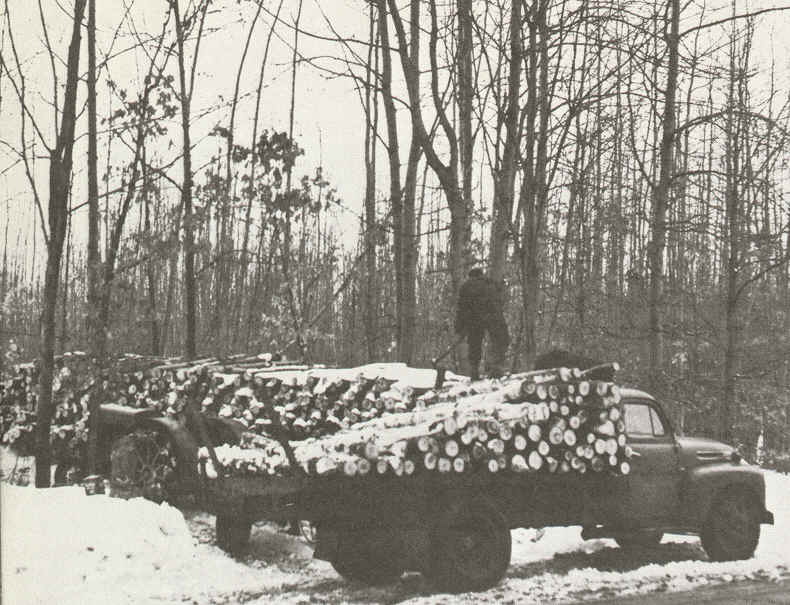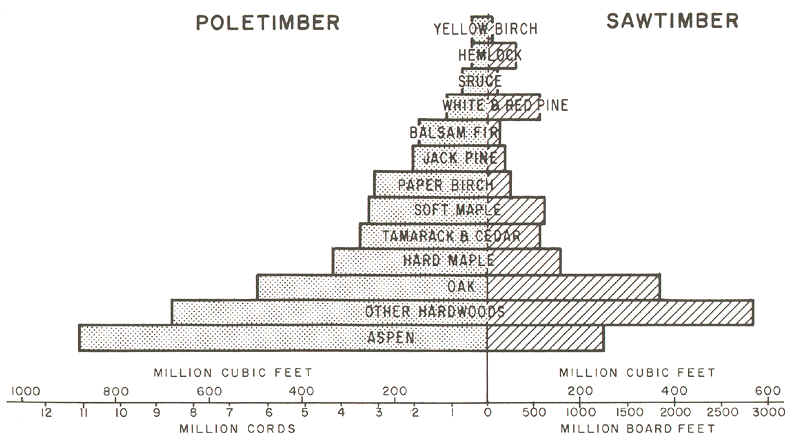LOGGING ACTIVITIES THAT CAME LATER
There had been little demand for hardwood timber until the end of the pine was in sight.
Hardwood lumbering in the north part of the Lower Peninsula occupied the period from 1890
to 1920, and cutting of the remaining virgin hardwood stands continued in the western end
of the Upper Peninsula until about 1950. There seemed to be no end in sight.
However, the end of logging did come, and as the graph below shows, logging in Michigan
"bottomed out" soon after that.
Pine lumber from Michigan, Wisconsin, and Minnesota was critical importance in the
peopling of the prairies of mid-America. It made possible the building of farmhomes and
barns, and Chicago was re-built after the great fire of 1871 with Michigan and Wisconsin
pine. But the passing of the lumberman left to Michigan itself a legacy of problems.
Homesteaders and those who obtained land from the railroads or the state tried, but in
most cases failed, to make a living on the sandy soil in the cut-over. Railroads, which
had built lines into northern lower Michigan with the inducement of land grants, were left
with little traffic. The end of large-scale lumbering in the Upper Peninsula, coupled with
the decline, first of copper and then of iron production, brought severe economic problems
to that area. The relatively poor soils and the short growing season repelled farmers; the
distance from major markets did not make the region inviting to manufacturing industries.
The recreation industry, patronized by tourists, resorters, and vacationists, became the
major element in the economy of northern Michigan.
Eventually, most areas that had been logged "once-over" began
to regrow, and logging was then wholly confined to regrowth.
The lumber industry helped to shape the state’s industrial landscape. Wood product
industries manufactured furniture, sashes, doors, blinds, barrels, wagons, carriages,
housewares, caskets, and railroad ties. Wood industries grew rapidly in the 1860s and
1870s, with a large influx of skilled immigrant labor and access to new raw material.

Source: Unknown
The lumber industry also enabled Michigan to become a leader in pulp and paper
production. Changes in papermaking technology is the 1870s - away from cloth and straw and
toward wood pulp - allowed of a continued demand for logs too small for lumber
("pulp" wood logs).
Source: Unknown
Today, Michigan is a reforestation success. Michigan has more forested land today
than it has had in many decades. This supply of wood enables the state to respond to
times of critical need, as in World War II. Note the graph below which shows WW II
lumber production.
This material has been compiled for educational use only, and
may not be reproduced without permission. One copy may be printed for personal
use. Please contact Randall Schaetzl (soils@msu.edu)
for more information or permissions.